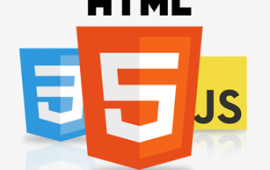Native mobile apps Vs. mobile-friendly websites
Mobile is no longer the future. Mobile is here and it has arrived with a ring. Mobile is so here, in fact, that even the most entrenched old-age companies are clamoring for Android and iPhone apps. And that is fantastic! But, it is very important that companies consider all of their options before investing a moderate amount of effort and capital into a native mobile app.
This article is the first in a series that will attempt to help decision makers choose between the two main methods of making their business accessible to mobile users. Those two options are native mobile apps and mobile-friendly (also known as responsive) websites. This first installment will discuss the advantages and disadvantages of electing to build a native mobile app.
Advantages of native mobile apps

These are the sort of apps you grab from the Apple App Store or the Google Play Store. You install them directly to your phone or tablet. They can send you alerts or messages, and can tap into other parts of your device (such as the calendar or contacts apps). Also, since they are installed onto your phone, they can be used without an internet connection. Native mobile apps also tend to be quick and feel more natural to users who expect a certain amount of responsiveness from their mobile programs.
Additionally, native mobile apps have the advantage of being persistent. Meaning, the app can initiate interaction, rather than the user. Traditionally, this was only possible via Email, which might not be read immediately, could be ignored, and is often a wide-net approach. Mobile apps however can alert a user when it wants their attention. This can be triggered by the user entering a certain geographical area, or be targeted to that individual based on information gathered in your app. Given the frequency with which most people check their phones, these messages can have a much more immediate impact.
Native mobile apps can also effectively engrain your brand and business into your customers’ minds. Once a user has downloaded your app, they will see it frequently as they flip between their apps. Even if yours is not the one selected, each of these times can be an effective visual reminder of your company. Furthermore, bored users are much more likely to open your app (which is likely one of less than a hundred they have installed) than they are to browse to your website (which is one of literally a billion).
Disadvantages of native mobile apps
The main drawback of this approach is that mobile apps are usually built independent of your existing website and can require a fair bit of development. This development time and effort is usually increased for every operating system (iOS, Android, Windows phone, etc) you want to support.
A second downside of native mobile apps is that they have a higher barrier to entry with your users. If someone is looking for your company, they are more likely to search for you on Google than they are to search for you in the app store (in most cases). In the event that a user does locate your app in the store, they will then have to download, open, and not soon delete your app. This is a bigger investment on their part than simply going to your website.
Lastly, native apps can take additional work to maintain as new phones and operating systems emerge. This can be avoided to some extent by making good decisions when engineering your app, but it is safe to assume some maintenance will be needed in the future when creating a native mobile app.
Native mobile apps - a solution
But not necessarily THE solution. This approach is powerful, but is not without its drawbacks. In the next article, I will discuss creating a mobile-friendly site as an alternative option.
Do you need an expert in mobile app development? With a team of mobile app development specialists covering a wide range of skill sets and backgrounds, The BHW Group is prepared to help your company make the transformations needed to remain competitive in today’s high-tech marketplace.




